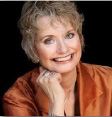Satellite Service Providers Turn to Hybrid Solutions for Broadcast
by Elisabeth Tweedie
Los Angeles, Calif. , April 5, 2024 - It would appear that whichever way you look, the outlook for traditional consumer Pay TV, is pretty bad. According to Ampere Analysis, in the US, this year is predicted to be the crossover year. The year in which streaming revenue (from subscription video-on-demand (SVoD) and hybrid subscription/advertising services) finally overtakes revenue from traditional pay TV subscriptions. In terms of actual numbers of subscribers, the crossover occurred in 2016, but since the average revenue per user (ARPU) for streaming services is so much lower than that for satellite or cable bundles, it has taken longer for the revenue crossover to occur. Ampere is projecting the crossover will happen in the second quarter of this year, with revenues of around US$17 billion for both streaming and traditional services.
 |
|
| "...Satellite operators and ground equipment and service providers are all adapting their business models so as to not only remain relevant in the face of changing consumer preferences, but also to continue to offer customers the best service. To that end 'hybrid,' 'flexible' and interoperability are terms that are heard more and more frequently..." |
When streaming services first came online, one of their big attractions, was the fact that the services were ad free. Now, many of them are offering ad-supported options, which are proving to be popular. Options vary, from totally free linear channels, known as FAST (free advertising supported TV), to paying a reduced subscription in return for a limited number of advertisements on a traditional video on demand channel. In the US revenue from ad supported tiers is predicted to be over US$9 billion, this year and according to Variety, in the US, FAST will overtake traditional streamed services as the preferred viewing method by 2030. Whilst increasing in popularity in the US, the growth in streamed FAST viewing pales into insignificance compared to the growth in Asia Pacific and Latin America. Data from Amagi indicates that year-on-year growth (Q4 2022 to Q42023) in hours of viewing of FAST channels increased 5% in the US and ad impressions 13% over the same period, in Asia Pacific and Latin America the corresponding figures were 130% and 352% and 64% and 173% respectively. Europe is growing at a similar rate to Latin America, and seems poised to continue that growth. On March 27th, Sony announced that it was launching 54 FAST channels across Europe.
Traditional TV Revenue Decline
This drop in traditional TV revenue is not unique to the US. In the UK, ITV (the commercial broadcaster) saw its linear advertising revenue fall 15%, whilst digital streaming revenues increased 19%.
Consumers’ appetite for streaming services of all kinds continues to grow. As of quarter three last year, Netflix had over 247 million global subscribers, an increase of 43 million from 2020. The market place is however getting crowded. In the US audiences have over 30,000 distinct channels (traditional and streaming) to choose from. As a result, a recent study found that 70% of consumers think that there are too many choices, and a Nielsen survey last year, found that viewers spent an average of ten and a half minutes searching for something to watch, and 20% of those surveyed admitted that on occasions they gave up and went and did something else instead. This proliferation of choice also means that viewers demonstrate little loyalty, and are prepared to drop a streaming service in favor of another, if that second service is showing a movie or series that they want to see. So, as has always been the case “Content is King.”
Streaming services have taken this to heart, as according to a January 2024 report from Collider the three most expensive series ever made, came from Amazon and Netflix; with Amazon leading the way at US$50 million per episode for “Citadel,” and US$58 million per episode for “The Lord of the Rings: The Rings of Power.” Netflix was third at US$30 million per episode for “Stranger Things,” this however, was made in 2016, whereas the two Amazon series were made in 2023 and 2022.
Interestingly, in spite of these massive investments in original content, in 2023, 60% of content viewed on streaming channels, came from content that was first aired on traditional linear channels. This doesn’t signify a downturn in appetite for streaming, but does potentially point to an additional business model for those services, such as FAST channels, which are almost entirely content reruns introducing yet another way for providers to use back catalogs. This was summed up by a comment from Pete Wood, SVP, digital sales, distribution, at Sony Pictures Entertainment, when announcing the 54 new FAST channels for Europe: “Sony Pictures recognizes the potential of the free ad-supported television space to engage new viewers globally with our extensive feature film and TV series catalog spanning 100 years. Our entry into the FAST space in Europe reflects our dedication to making premium content accessible to audiences on new and important distribution channels.”
The Rise of Streaming Does not Mean an End to Satellite
As I have mentioned many times in the past, this switch to streaming, does not mean the end of satellite. Undoubtedly there is a significant decline in direct-to-home (DTH) satellite TV, and a decline, but not the end, of video overall, which will remain an important revenue source for many years to come. It must be remembered that whilst most customers in developed countries enjoy access to terrestrial broadband, this is not the case in many countries. And for a content creator or packager, as long as some of its customers remain out of reach of a reliable broadband connection, satellite remains an essential part of its distribution strategy. Eva Berneke, CEO Eutelsat reported in February that video still accounts for 52% of Eutelsat’s revenue, hardly something to be dismissed lightly, even if it is slowly declining. In its latest Satellite Monitor, SES reported that it now delivers over 8,000 channels to 369 million TV households across the globe: three million more than the in 2022. Growth came from Europe (+6.3 million households) and Africa (+ 3 million households). This was offset by a decline of 5.4 million in North America.
Geostationary satellites’ key advantage has always been the provision of point-to-multipoint distribution, and there are still many geographic areas and applications that rely on that ability. For example, Sony has just renewed a distribution agreement with Intelsat for another five years. This agreement is to distribute 40 channels throughout India, to its ecosystem of service providers some of whom are located in areas with limited terrestrial connectivity.
Hybrid Solutions
Satellite operators and ground equipment and service providers are all adapting their business models so as to not only remain relevant in the face of changing consumer preferences, but also to continue to offer customers the best service. To that end “hybrid,” “flexible” and interoperability are terms that are heard more and more frequently. For example, International Datacasting’s MistiQ, service started life more as a backup to satellite, in the event of an outage. Now, its third generation is marketed as a hybrid service, offering both satellite and an internet cloud solution for broadcasters for secure multi-point distribution of radio and television network programming. As Diana Cantu, VP Marketing and Sales, commented: “Everyone is still figuring out the economics of getting off satellite, for many networks it just doesn’t make sense right now. Nevertheless, we’ve positioned ourselves for what customers want to do now and will need to do in the future. There are options available and we’re going to make sure that we’re able to offer those, and provide our customers with a flexible migration path.” Cantu also pointed out that the video market is fragmenting into more segments with distinct needs. For example, whilst most networks are focusing on the move to streaming and maybe dropping some broadcast channels, religious networks in the US are increasing the number of campuses that they operate from, and buying up broadcast stations.
Taking “hybrid” one step further, ST Engineering iDirect unveiled its new “Intuition” platform at Satellite 2024 in Washington DC, last month. This is designed to be a unifying migration platform for users of all of its hubs, whilst equally available to new customers without iDirect legacy systems. Tim Verschage, SVP Product Strategy and Development summed it up this way: “Intuition brings together the key technologies on the ground to interconnect space assets to dynamically move capacity where it’s needed, creating an optimum solution by unifying operations across networks.”
Intuition is an advanced satellite networking ground system, based on a cloud-native, multi-orbit architecture, using the latest standards-based technologies. Features include: end-to-end orchestration, the ability to integrate multi-orbit satellite networks into global networks whether these be terrestrial or satellite, a virtualized cloud-based architecture and flexible go-to-market models.
As already mentioned, advertising supported streaming channels are experiencing rapid growth, but even in the United States there are areas that lack the broadband connectivity needed to watch streaming video. WeDo TV, a global FAST channel provider, is solving this problem with satellite. It is bringing its channel “We do Big Stories,” to the US, utilizing Intelsat’s Galaxy 19. Essentially, this means providing a free DTH channel. Not quite full circle as this is an advertising supported linear channel delivered by satellite, rather than over-the air; nevertheless, it does have more than a whiff of déjà-vu about it. And, if others follow suit, who knows - could this signal a revival for the DTH market.
----------------------------------------
 Elisabeth Tweedie has over 20 years experience at the cutting edge of new commmunications entertainment technologies. She is the founder and President of Definitive Direction (www.definitivedirection.com), a consultancy that focuses on researching and evaluating the long-term potential for new ventures, initiating their development, and identifying and developing appropriate alliances. During her 10 years at Hughes Electronics, she worked on every acquisition and new business that the company considered during her time there. She can be reached at etweedie@definitivedirection.com
Elisabeth Tweedie has over 20 years experience at the cutting edge of new commmunications entertainment technologies. She is the founder and President of Definitive Direction (www.definitivedirection.com), a consultancy that focuses on researching and evaluating the long-term potential for new ventures, initiating their development, and identifying and developing appropriate alliances. During her 10 years at Hughes Electronics, she worked on every acquisition and new business that the company considered during her time there. She can be reached at etweedie@definitivedirection.com





